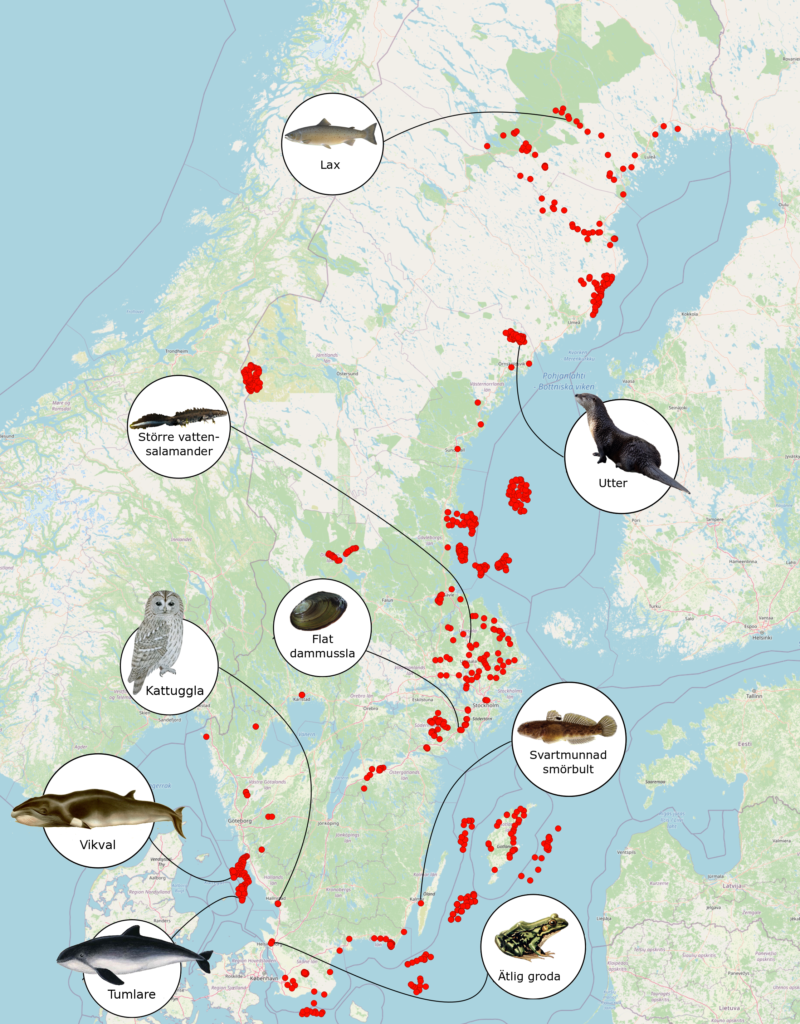
All organisms leave traces of DNA fragments in their environment and these can be extracted and analysed. Through water samples we can find out which species are present and most abundant in a waterbody. The technique is called environmental DNA or eDNA and is now a fully operational inventory methodology after rapid development in recent years.
AquaBiota has good results from more than 60 projects where we surveyed the species composition of fish or amphibians from water sampled in lakes, wetlands, streams and marine environments. The results from studies of fish communities show a species richness that cannot be detected by traditional survey methods (gillnet fishing / electric fishing etc). We have also successfully inventoried the species composition of river mussels and aquatic mammals with eDNA. The reliability is very good, and the detection rate is generally much higher than conventional methods. Quality aspects are monitored continuously, and completed projects have proven to hold very high quality.
eDNA development is very fast and we actively participate in research and development together with other leading international players in the field. Currently, we are working on development of a genetic analysis of bacteria which will enable source tracking of faecal pollution within pristine catchments.
Read more about…

Examples of locations in Sweden where samples were taken during the years 2018-2022 (red dots) and a selection of species identified by using eDNA metabarcoding. Complete communities of species groups (e.g. fish, amphibians) were analysed at all sampled sites.